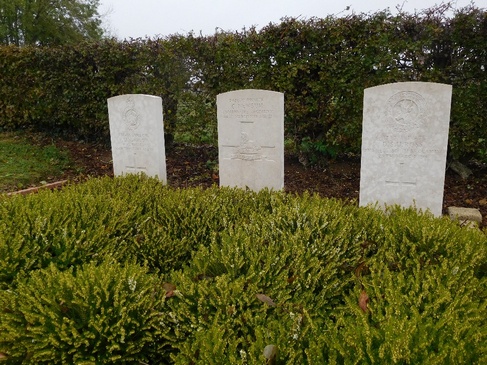The Dragon’s Voice
Hello and welcome to the Christmas bumper issue! There will not be a January edition of this newsletter. The next one will therefore be February. In this issue, we have articles from Keith and Steve, an account of the Somme commemoration on 18th November, and a summary of Anne’s talk from Terry Jackson, in case you missed it. As ever, we owe many thanks to Jim Morris for allowing us to use his WWI day by day material on the Facebook page. Merry Christmas and a Happy New Year to you all.
Trevor
The Programme for 2016
December 3rd - Branch Social
The Programme for 2017
Jan 7th : Beer and Blather at the Albion (pub in Chester city centre)
Feb 4th : Georgina Holme : Some Great War Commemorations in Anglesey
Mar 4th : John Sneddon : Bombay Sappers and Miners at Neuve Chapelle 1914
Apr 9th : Dr Graham Kemp : How the 10th Cruiser Squadron Won the War
May 6th : Jon Bell : Comparing Medical Services in the Great War with now
Jun 3rd : Stuart Hadaway : RWF and the Battles of Gaza and the Thomas Brothers
July 1st : Colin Walker : Scouts in the Great War
Aug 5th TBC
Sept 2nd : Taff Gillingham : Daddy what did you do in the Khaki Chums and Development of Uniforms and Equipment.
Oct 7th : John Stanyard : Under Two Flags, the Salvation Army in WW1
Nov 4th : TBC
Dec 2nd : Branch Social
Last month’s speaker
The speaker was none other than our very own Anne Pedley. She talked about Mountaineers in the Great War. She also gave the talk at the Stockport branch of the WFA (aka Lancashire and Cheshire branch) and below is an account of the talk from Terry Jackson of that branch.
Anne Pedley, the archivist of the Royal Welch Fusiliers, combined her interest in the Great War and her home in the Welsh hills to consider the early British mountaineers, many of whom served in the war. The passion for Alpine climbing had developed during the Edwardian era and Snowdonia was a perfect training ground for these new explorers of the high peaks of the Alps and beyond. Several organisations were based there and produced some of the most eminent climbers of the period. After a consideration of these organisations and movements that brought these adventurers together, Anne looked at the lives of several of them.
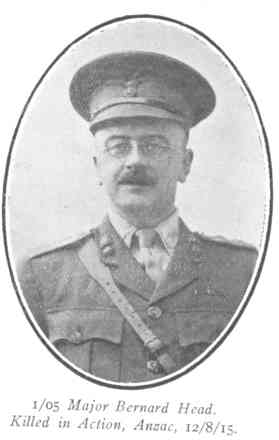
Bernard Head (left) was a major in the Royal Welch Fusiliers. He was originally from New Zealand. He was the first with two others to climb Mount Aspiring (9000 feet) on South Island in 1909. He was killed at Gallipoli on 12 August 1915 and is remembered on the Helles Memorial.
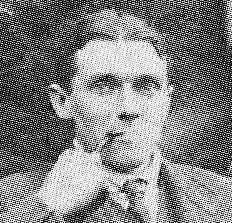
Stanley Fearns Jeffcoat (right). Jeffcoat lived for a while in Buxton. He served with the 22nd Bn Royal Fusiliers. In April 1917 2nd Lt Jeffcoat bombed along the trenches near Oppy, Arras in order to link up with 63 Division. He subsequently died of wounds on 30 April and was posthumously MID. He is buried in Rolincourt Military Cemetery. He had been a member of the Fell & Rock Climbing Club.
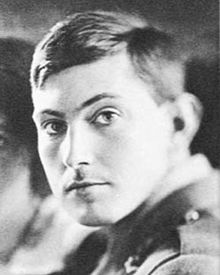
The most famous mountaineer of the war was George Mallory (left). He had gained a reputation as a fine climber. After studying at Cambridge, he served as a 2nd Lieutenant in the Royal Garrison Artillery on the Somme. He was member of the 1924 British expedition to Everest. He partnered Sandy Irvine on their final attempt to reach the summit, but never returned. In the following years, two separate climbers were to claim they had seen his body. There has been continual speculation as to whether the pair had reached the summit. In 1999 Mallory’s frozen body was found high up on the mountain. He was identified by his name tag sewn into his clothing. Irvine had taken a camera with him, but his body has never been found. It was hoped the camera might have been with Mallory and would have proved if they reached the peak.
The 1924 Everest expedition had initially been led by Charles Granville Bruce (right). He was from a wealthy family, his father being 1st Baron of Aberdare.
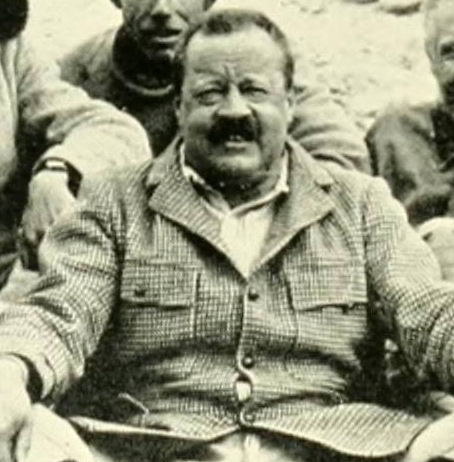 Bruce became a career soldier and whilst serving with the Ghurkha Riles climbed in the Himalayas. He rose to the rank of Brigadier General and was wounded at Gallipoli. After the war he was President of the Alpine Club 1923-1925. He caught malaria and had to be evacuated during the expedition.
Bruce became a career soldier and whilst serving with the Ghurkha Riles climbed in the Himalayas. He rose to the rank of Brigadier General and was wounded at Gallipoli. After the war he was President of the Alpine Club 1923-1925. He caught malaria and had to be evacuated during the expedition.
Italy was the scene of fierce fighting in the mountains. Germany’s most famous soldier of the 20th century was Erwin von Rommel (below). He came to prominence fighting with the Alpencorps in the Italian mountains. At the Battle of Caporetto in October 1917, he was awarded the ‘Pour le Merité’.
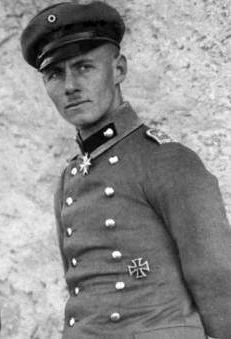
Many hill walkers will be familiar with the Fell and Rock Club Memorial on Great Gable. It was placed on the summit in 1924. The original was replaced in 2013 in order
to correct some spelling mistakes. All in all, this was a fascinating study of some of the most well- known climbers of the period.Terry
A Walk Around Boulogne Eastern Cemetery
Keith Walker
Boulogne was one of the three base ports most extensively used by the Commonwealth armies on the Western Front throughout the First World War. It was closed and cleared on the 27th August 1914 when the allies were forced to fall back ahead of the German advance, but was opened again in October 1914. Boulogne and Wimereux formed one of the chief hospital areas. Until June 1918, the dead from the hospitals at Boulogne were buried in the Cimetiere de L’Est, one of the town cemeteries, the Commonwealth graves forming a long narrow strip along the right hand edge of the cemetery. In the spring of 1918, it was found that space was running short in the Eastern Cemetery in spite of repeated extensions to the south. A new cemetery at Terlincthun was opened. Boulogne Eastern Cemetery contains 5,577 Commonwealth burials of the First World War and 224 from the Second World War. The Commonwealth plots were designed by Charles Holden. In this cemetery we find a nurse, a war poet, a Victoria Cross holder and four “shot at dawn”.
Staff Nurse Ethel Fearnley M.I.D
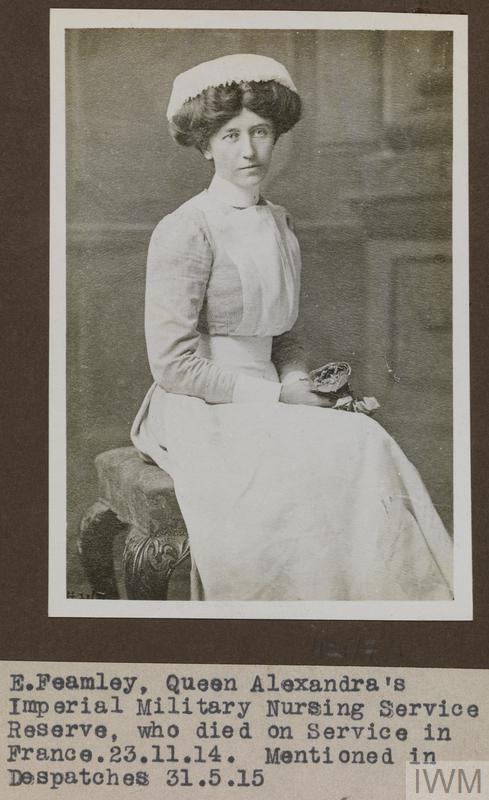
One of the first graves you come across in plot one is of Staff Nurse Ethel Fearnley. Ethel Fearnley was a member of the Queen Alexandra's Imperial Military Nursing Service (R). She was one of the early nursing casualties of the war. She was the first nurse to die. I cannot find an earlier date. She died on the 23rd November 1914 from a haemorrhage, at the base hospital where she served No 11 General Hospital in Boulogne. Miss E Fearnley before the war worked at St Thomas's Hospital London. Her father lived in Gibraltar. She was gazetted for her M.I.D on 31st May 1915. She is buried in Plot 1-B-6. Not far from Nurse Fearnley is one of the war poets.
The Hon Julian Henry Francis Grenfell
Captain Julian Grenfell, was the son of Lord and Lady Desborough. He was born on the 30th March 1888. He was educated at Eton and Balliol College, Oxford. He joined the Royal Dragoons in 1910. During the next four years Grenfell served as a Cavalry officer in India and South Africa. At the outbreak of the of the First World War, Grenfell was sent to France. He soon obtained a reputation for bravery by stalking German snipers and then shooting them from close range. He was twice mentioned in despatches and was awarded the Distinguished Service Order (D.S.O.) Seriously wounded by shrapnel in the head while serving near Ypres at Hooge he was taken back down the line to the base hospitals at Boulogne where he died after two failed operations on the 26th May 1915.His mother, father and sister were at his bedside. The announcement of his death in The Times three days later, the date of his burial in Boulogne, was accompanied by publication of his most famous poem, “Into Battle”. He is buried in Plot 11-A-18. Captain J.H.F. Grenfell's brother Second Lieutenant Gerald William Grenfell of the Rifle Brigade was killed on the 30th July 1915. He is commemorated on the Menin Gate Panels 46-48-50. Six graves from J.H.F. Grenfell is F.W. Campbell VC.
Captain Frederick William Campbell VC
Capt F.W. Campbell was born on the 15th June 1869 in Mount Forest, Oxford County Ontario, Canada. He was the only son of Ephraim B. and Esther A. Campbell and the husband of Margaret Annie. As a militia soldier of the 30th Wellington Rifles he served in the South African War. He was awarded the Queens South Africa Medal with four bars.
As a lieutenant in the 1st (Western Ontario Regiment) Battalion Canadian Expeditionary Force during the First World War, he was awarded the VC for actions performed on the 15th June 1915 at Givenchy, France when he took his machine guns forward to the German trenches and held his position against a determined German counter attack. As he was retreating, he was wounded in his right thigh bone. He was evacuated down the line to a field hospital and then on to base hospital at Boulogne. Unfortunately the wound became septic. He died four days later on the 19th June 1915 aged 46.
His citation reads:-
“For most conspicuous bravery on the 15th June, 1915, during an action at Givenchy Lt Campbell took two machine-guns over the parapet, arrived at the German first line with one gun, and maintained his position there, under heavy rifle, machine-gun and bomb fire, notwithstanding the fact that almost the whole detachment had been killed or wounded. When our supply of bombs became exhausted, this officer advanced his gun still further to an exposed position, and, by firing 1,000 rounds, succeeded in holding back the enemy's counter-attack. This very gallant officer was subsequently wounded, and has since died “.
He is buried in Plot 11-A-24.
Four soldiers “shot at dawn”
Private George Mills
2nd Btn Duke of Cornwalls Light Infantry s/n 18603 D.O.D 29th September 1915
George Mills enlisted on the 24th February 1915 and within three weeks he was in France serving as an officer’s servant. While he was at Amentieres, George stole a uniform of a Lieutenant, cheque book and some cash. He then made is way to Boulogne. He was caught. He was not sent back to his unit but was court marshalled in Boulogne. George Mills was charged with desertion, found guilty and sentence to be shot at dawn. Private George Mills was shot on the 29th September 1915.
He was the son of Mrs Pilling of 142 Morlake Road London. He was 21 years old and is buried in Plot V111-B-81.
Private John William Roberts
2nd Btn Canadian Mounted Rifles s/n 107526 D.O.D 30th July 1916.
The records do not show when John William deserted. It was found that John William had been living with a woman in Boulogne for several mouths. His mistake was that he drew his pay from the base cashier and was then caught. John William Roberts was not sent back to his unit but was court marshalled in Boulogne. He was charged with desertion and sentenced to be shot at dawn. This was carried out on the 30th July 1916. Private John William Roberts was 20 years old.
There is a myth that the families of soldiers shot at dawn did not know their fate. Private John William Roberts’ mother received this rather blunt letter.
Madam
With deep regret I have the honour to inform you that a report has been received to the effect that No 107526 Private Roberts JW was tried by Field General Court-Martial at Boulogne, France on the 15th July 1916 on the charge of “when on active service deserting his Majesty's Service” and was sentenced by the court “to suffer death by being shot”. The sentence was duly carried out at 4.36 am on the 30th July 1916.
I have the honour to be Madam,
Your obedient servant,
Frank Beard
I/c Records Office
Private John William Roberts is buried in Plot V111-A-154.
Lance/Bombardier Frederick S. Arnold
1st Bde Canadian Field Artillery s/n C/40124 D.O.D 25th July 1916
Frederick S. Arnold was an American. He had served in the American Army. He then enlisted in the Canadian Army, and joined the Canadian Field Artillery. After being involved in heavy fighting in the Ypres Salient he deserted. He was found in civilian clothes in Boulogne. Frederick S. Arnold was not sent back to his unit but was court marshalled at Boulogne. He was charged with desertion and was sentenced to be shot. The sentence was carried out on the 25th July 1916. Some reports state if his service record had been shown at his trial he may have got 10 years hard labour. He was 26 years old. He is buried in Plot V111-A-137
A/Cpl J.R. Short
24th Northumberland Fusiliers (3rdTyneside Irish) s/n 26/626 D.O.D 4th October 1917
Jesse Robert Short was born on the 4th July 1886 to William and Margaret Eleanor Short of Nantyglo, South Wales. William Short was a coal miner.
Jesse Robert Short married Dinah Lowe who was born in Corwen North Wales in 1911. The couple had two children Margaret (b 1912) and Mary (b 1914) The family where then living in Felling in Durham. Jesse was working as a coal miner in Heworth colliery.
Jesse tried to enlist at the outbreak of war but was too short. Jesse was 5ft 3ins tall and less than 9 stone in weight, but in November 1914 the height requirement was changed. Jesse enlisted in the 26th Northumberland Fusiliers in November 1914. He went to France with the 24th Northumberland Fusiliers (3rd Tyneside Irish) in January 1916.
As Jesse's records are missing we can only assume that Jesse was with the Tyneside Irish when they fought in the Battle of the Somme on the 1st July 1916 when the Brigade lost 600 men killed and 1,500 wounded. One year later, the brigade was serving at the front at Ypres. It was at Ypres that Jesse was either wounded or taken ill and sent down the line to Etaples to recover.
It was at Etaples in September 1917 where Jesse was charged with “endeavouring to persuade persons in His Majesty's Regular Forces to join in a mutiny.”
There was an altercation on the bridge over the River Canche. In evidence given at Jesse's trial which was held in Boulogne Captain E.F. Wilkinson of the 8th West Yorkshire Regiment states:-
On the afternoon of the 11th instant, I was in charge of a picquet of 150 armed and 50 unarmed men on the Bridge over the River Canche leading from Etaples to Paris-Plage. At about 9.15 pm, about 80 men marched towards the bridge from Etaples, some of them armed with sticks and notice boards. The picquet failed to stop these men from crossing the bridge. The accused detached himself from this party and while I was addressing my picquet and remonstrating with them for failing to stand-fast, the accused started haranguing them. Referring to me he said “you want to put a rope round that bugger's neck tie a stone to it and throw him in the river”, and he told the men they should not listen to me. Within a few minutes I was able to get the accused arrested.
Despite his previously good disciplinary record Jesse was found guilty and sentenced to be shot. This was confirmed by General Haig on the 30th September 1917. Jesse Robert Short’s sentence was carried out on the 4th October 1917 at Boulogne he was 31 years old. He is buried in Plot V111-I-43.
His epitaph reads:-
Duty called
and he went forward
Ever remembered by
his wife & children
No other soldiers were sentenced to death but, three soldier's received ten years penal servitude, ten soldiers were jailed for one year with hard labour, thirty three soldier's sentenced to between seven to ninety days field punishment, and others were fined or reduced in rank.
References and acknowledgements:-
CWGC
Mr Peter Williams (Battlefield Guide)
“Shot at Dawn” by Julian Putkowski & Julian Sykes, published Pen & Sword 1993
Commemoration of the end of the battle of the Somme, 18th November
Trevor Adams

Caroline and I had been at the 1st July commemoration at the Ulster Tower this year and also at one of the commemoration services run by the Royal British Legion (RBL) at the Thiepval memorial, on 3rd July the centenary of my grandfather’s death. As a result of being at Thiepval, we were evidently in the RBL’s system so it was no great surprise to receive an email offering to put us in a ballot for tickets for the 18th November event. I have no great faith in my luck in ballots, so did not enter the ballot but was then surprised to receive a further two emails over some weeks asking if we wanted tickets. This suggested, correctly, that the event was far from being oversubscribed. So, I contacted the RBL and received tickets back by email in a couple of hours, with their typical efficiency.
So, on 18th November we were on the bus up to the Thiepval memorial dressed in our waterproof outdoor gear, and indeed inline with the diplomatic warning from the RBL about the weather on the Somme in November. The drumhead service was a on a much smaller scale that the 1st July event, there probably being no more than 500 people there as opposed to 10,000 in July. There were representatives from the French government and the German veterans association as well as the RBL, the British ambassador to France, Earl Howe of the House of Lords, the CWGC and the Irish ambassador to France. (Photo below shows the two clergymen and the British Ambassador, Lord Llewellyn).
The service was led by Bishop James Newcome, the RBL national chaplain, and Rev Stephen Hancock, chaplain to the RBL Somme branch. There was a military band, and an Irish piper playing the lament “Flowers of the forest”. The piper accompanied the wreaths laid by the dignitaries to the memorial itself.

Shortly after the start, the service was hit by high wind and heavy rain. Those in more formal clothing were soaked. The storm had receded by the time of the bishop’s address but no-one sat down again, as people reckoned that the wet seats were a worse option than remaining standing! The service finished in bright sunshine with a rainbow visible over the visitors’ centre, rather symbolically.
The hymns included “I vow to thee my country” written by Sir Cecil Spring Rice, the British ambassador to the United States at the time of WWI. His first cousin, the Hon Mary Ellen Spring-Rice, has appeared in these pages as an upper-class gunrunner for the Irish volunteers in 1914. There were a few differences of opinion in that family then!
We had the previous day visited the Thiepval memorial to locate the names of the old boys of my school in Belfast who were killed in the opening of the battle. There are five on the Thiepval memorial and another buried in the CWGC cemetery at Mill Road, who was a twin of one of those on the memorial. Another old boy died of wounds on the 4th July and is buried at Rouen, to where he had been evacuated.
During our visit, we met up with various friends, including Steve, Nancy and Pam. We did say to some French friends about the weather “Well, it is the Somme in winter”, to which our friends said “Oh no, this isn’t winter, this is only the autumn, winter is worse!”
All in all, a very worthwhile trip but it is a shame more people didn’t go to the service at Thiepval. Yes, it was autumn on the Somme but then the soldiers of all armies were there one hundred years ago all through the winter in trenches without modern clothing or shelter, which was bad enough even when the opposition weren’t trying to kill you.
Winter Hibernation (or go slow!)
Steve and Nancy Binks
I’m not quite sure, but I think we are about halfway through our “SomeKindHand Pilgrimage”. By far the greatest concentration of burial grounds lies ahead of us; 1918. We would dearly love to be in a position to start these burial grounds around the summer of next year, but to achieve this we need to be much more active over the winter months than ever before. We have no overall deadline and don’t believe we will complete our Pilgrimage before 2020.
This article is about our Pilgrimage visits on Monday 14th November, a typical Somme day; cold, damp with low mist and for Nancy and me a typical “day in the life”. We moved to our winter hibernation in Morval at the end of October, storing the caravan with a local farmer rather than hauling it back to North Wales. It is quite a luxury not having to assemble the bed every evening and then put it away each morning, as is having a HOT shower and not having to run about to get wet.
We had visitors later that week and wanted to ensure that we had completed our “quota” before their arrival. We hated the thought of giving ourselves a numerical target of burial grounds to visit whilst at Morval but we have already committed ourselves to three months stay in Flanders from April – June 2017 which we hope will all but complete our 1917 burial ground visits, (except for the distant and isolated.)
From Morval, which is just on the border between the Somme and Pas de Calais, we have - as of today, 30th November - about eighty burial grounds to be visited in the departments: Aisne, Nord, Pas de Calais and Somme, so that is about five per week. They include: V Corps burial grounds established across the Somme battlefields in the spring of 1917, after the German withdrawal to the Hindenburg Line; burial grounds established in the pursuit to the Hindenburg Line; and the Battle of Cambrai burial grounds, including the Memorial to the Missing at Louverval. However, the vast majority are French communal cemeteries, spread far and wide across the named departments.
It may not sound much but even the most stalwart would find it difficult to walk slower than a Mk.1 tank from headstone to headstone on a Baltic cold day (like today!). And of course my darling wife has to sit there trying to thumb the pages of the cemetery register set with rigor mortis; that’s the register by the way!
After an evening pouring over our Michelin map for the most economical route, the plan for Monday the 14th November included visiting six burial grounds located in villages to the south of the Cambrai battlefield and behind the British lines; Sunken Road, Villers-Plouich, (51), Villers-Plouich Communal Cemetery, (53), Gonnelieu Communal Cemetery, (1), Villers-Guislain Communal Cemetery, (51), Heudicourt communal Cemetery (4) and Heudicourt Communal Cemetery Extension, (85). The outward journey was about 35 minutes; 20 minutes if you were French.
The country roads this time of year in France are at their worst; wet with mud and the debris from tractors and the gargantuan farming vehicles. Soon, given the size of some of these monsters, they will be able to harvest, chop and bag the product on the field! Its bad news I’m afraid for many a “grubbler”. Fields are now ploughed and tilled all on the same day; only the poorer farmers who cannot afford the (European subsidised) equipment offer decent battlefield “grubbling”! Sorry Diege!
Our first stop was Sunken Road Cemetery and after a summer of bumping over many a bone dry farm track, one has to think very carefully about taking the “bus” down these god forsaken (sunken) tracks this time of the year. This one was okay. The next consideration is to park safely, so the biggest contraption can pass without me having to worry about coming back to a wrecked vehicle, or turning my neat parking space in to a quagmire. Next, the issue is getting Nancy and chair in to the cemetery. After our near miss at Vimy, I now think twice about ascending steps with Nancy in the chair. Unfortunately, with a stepped entrance and no disabled access, Nancy had to sit this one out.
No such problems with the communal cemetery in the same village. We could see from the carpark that the British plot was marked by a Cross of Sacrifice and duly entered the main gate of the small but very tidy cemetery, nodding “bonjour”, to the on-site maintenance chap as we entered. What we didn’t expect to see was two isolated Portland headstones amongst the civilian headstones! There was no register onsite to inform the visitor to these isolated graves, and the on-line information doesn’t mention these burials either.
We choose not to research our proposed burial grounds and burials prior to our visit; we enjoy the surprise and the variation; not so much the frustration of not finding the right number of burials though. Occasionally, we need the use of Nancy’s mobile internet to access the CWGC site or their app, especially for locating communal cemeteries and single burials amongst a sea of thousands in the larger cemeteries. Alternatively we telephone CWGC headquarters (Beaurains, Arras) and speak to our friend Muriel. She has become a good friend and hopefully she doesn’t see us as a pain in the “you know what”.
It is unfortunate that most of the smaller burial grounds don’t have a cemetery register. Indeed on this day, only the Extension at Heudicourt had one. Being at Morval gives us much more time than in the caravan to write up our “visit form” once we return after our visits. Unfortunately, the first two burial grounds lacked any solid information on their beginnings and so one needed to check if the casualties were exhumed from elsewhere. (In which case, they would have exhumation records.) From burial records it seems that Sunken Road was started by units of the 6th Division on the first day of the German counter-attack during the Battle of Cambrai. It was used through December 1917 by the Royal Naval Division (RND), with burials stopped the following month. The ground came under German control in March 1918, but the cemetery shows little evidence of burials within their tenure, either their own or British POW’s. Four further graves were added in September 1918 as the British swept across the Hindenburg Line.
The communal cemetery has a similar history. However, the two isolated graves are both 1916 and a check of their burial records indicate that they were buried by the enemy. Villers-Plouich was behind German lines until their withdrawal to the Hindenburg Line. A further check amongst the casualties in the main plot shows that after the Armistice at least one of the unknown was exhumed to try to identify him; Lance Corporal Frederick George Pearcey (2/4th Oxford & Bucks L.I) who fell on the 12th December, 1917, was identified only by his shoulder titles and therefore likely that his Regimental depot had supplied his burial information to corroborate this most flimsy of information from the exhumation team. I also noticed that several of the unknown RND servicemen were incorrectly identified as “A Soldier of the Great War”. The headstones should read “Sailor” or “Seaman”; all three descriptions seemed to be used interchangeably!
A short ten-minute drive brought us to Gonnelieu Communal Cemetery containing the single burial of Lance Corporal Harry Abernethy (4/Grenadier Guards), who fell (according to the on-line cemetery register) on or since the 1st December 1917. Unusually, a further seven graves were destroyed in later fighting and are now commemorated by special memorial in Villers Hill British Cemetery. It is not known why Harry’s grave remains here.
The only exception to noting our visit, other than signing the cemetery register, is to leave a flower on the grave of single burials. Our visit here followed close to All Saint’s Day and the residents of Gonnelieu forgot to remember the sacrifice of their only British casualty; so we did it for them. French cemeteries are full of flowers!
Lunch time brought us to Villers-Guislain and its communal cemetery. It’s not a proper Pilgrimage day without lunch in a cemetery. The village was first occupied by British troops in their pursuit to the Hindenburg Line, but was lost during the German counter-attack during the Battle of Cambrai and finally secured in September 1918. Again no register and again isolated burials outside the main plot with its Cross of Sacrifice. The lack of register and its own entry in the CWGC database is a main reason for our return journeys, due to missing isolated burials in communal cemeteries.
I have developed a deep interest in headstones that are marked “Known” or “Believed to be buried in this cemetery”. They are usually around the perimeter of the burial ground and sometimes marked by a “Duhallow Stone” giving details of where the servicemen’s graves originally lay. The on-line register suggested that these seventeen casualties were “Known to be buried….” And had been destroyed by shell-fire*. One glance at the intimate nature of the cemetery got me thinking - is this meant to be amongst the civilian headstones? Thirteen of the casualties are 2/Scottish Rifles who fell during a failed raid on the enemy trenches on the 5th May 1917. (*I get the impression that “shell-fire” tends to be a catch all statement to cover lost graves.)
This is a classic instance of wanting to spend a day (or two) researching how these men’s graves came to be lost and then commemorated by Special Memorial. Trouble is we just don’t have the time, although we should have plenty when we finally complete our Pilgrimage in about three to four years’ time.
Our last stop of the day brought us to Heudicourt Communal Cemetery and Extension; two burial grounds. So, I don’t understand why both Villers-Guislain and Villers-Plouich burial grounds don’t have two entries, to distinguish the isolated burials that lie amongst the civilians.
As we had followed the Green Sign to the Extension it brought us unfortunately to the rear of the communal cemetery; three of the four graves amongst civilian headstones were close to the entrance; yep, up a slope! Trying to push a wheelchair - even with Nancy’s light frame - is difficult enough across shale, but up hill, it is almost impossible without pulling Nancy backwards.
The three graves date from March 1918 and were buried by the Germans. Although not listed in the Extension cemetery register, a previous visitor had written that Private D.S.U. Ross (2/Regiment South African Infantry) was believed to be 15 years old! There was no age inscribed on his headstone.
The extension was started in April 1917 (shortly after its capture in March) and used by fighting units until the following March and the German Spring Offensive. Several later burials followed the September 1918 fighting. Martin Middlebrook in his book about the Somme cemeteries, labelled this type of cemetery as a comrades cemetery; small groups of servicemen from the same unit buried close to each other, for example: 2/Lincolnshire (April 1917), 14/Gloucestershire (June 1917). Most represented, however, were the officers and men of the 6/King’s Own Scottish Borderers, whose ranks occupied almost all of rows D & E. Their dates of death cover 7th to 16th December 1917. Again notes and photographs duly taken for later research; I know nothing of the 9th (Scottish) Division in this sector!
It was a full day and was turned 5.00pm when we arrived back to Morval. After a cuppa, where the rule is that we do nothing, we accessed the CWGC website to update our visit forms with their burial ground historical information. After which we turned our attention to some basic research for some of the individual and groups of headstones that we had noted. Most important is to recognise a soldier by his full name. I really don’t like not knowing a soldier’s Christian name, or to have to identify the battalion from the regimental headstone groups. Most of the time, the more detailed “work” goes on the “to do” pile. The Pilgrimage saps energy more than anyone can imagine.
One piece of research that we wanted to look at was the claims about the age of Private David Ross. After little work, we found his story from a mixture of South African Archives and from the battleground series of books: Salient Points 3. Here are the brief details:
Private David Schalke Ulundi Ross 11322 enlisted on the 5th February 1917 at Durban, Natal, embarking later that month aboard SS Walmer Castle. Weeks later he was disembarking at the South African Brigade Depot at Rouen, where he was drafted to the 2nd Infantry Regiment. On the 20th September, during the Third Battle of Ypres he was wounded in the left leg and was eventually evacuated to the south coast of England (22nd General Hospital). On the 12th February, he reported to the Infantry Replacement Depot, Rouen from where he was despatched to re-join his regiment.
On the 21st March 1918, the South African Brigade was desperately trying to defend an open flank against the German onslaught around Gauche Wood. Private Ross was mortally wounded and taken by the enemy to Revlon Farm, where on the 24th March, 1918, he died of his wounds.
The original Imperial War Graves Register states that his home address was room 15, 218 Arcida Mansions, Johannesburg and that he was aged 14 years old.
Having seen several other 14 year old boys in other registers, I made a point of verifying Private Ross’s details. I emailed Terry Denham (“In from the cold”, website), who stated that Private David Ross is the youngest confirmed infantryman to fall in the Great War.
That is all for now. Nancy and I are spending Christmas and New Year in France, so Merry Christmas and hope to see you all in the New Year!


Figure 1.(left) Cemetery Steps at Sunken Road Cemetery. Before our experiences at the Vimy memorial, I would not have thought twice about dragging Nancy and chair up them!
Figure 2. (below) Tank made from old shell cases outside Villers-Plouich Communal Cemetery


Figure 3. (left) The isolated grave of Lance Corporal Harry Abernethy, with "borrowed flowers"
Figure 4. (immediately below) Villers-Guislain Communal Cemetery. The seventeen special memorial headstones are on the right against the hedge
Figure 5. (bottom of the page) The grave of the youngest confirmed soldier to fall in the Great War
